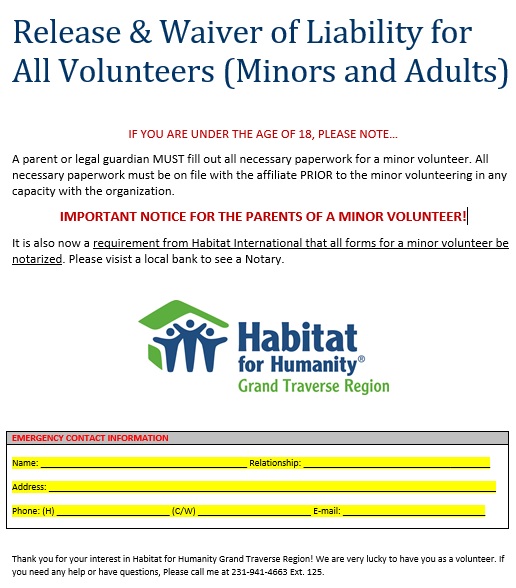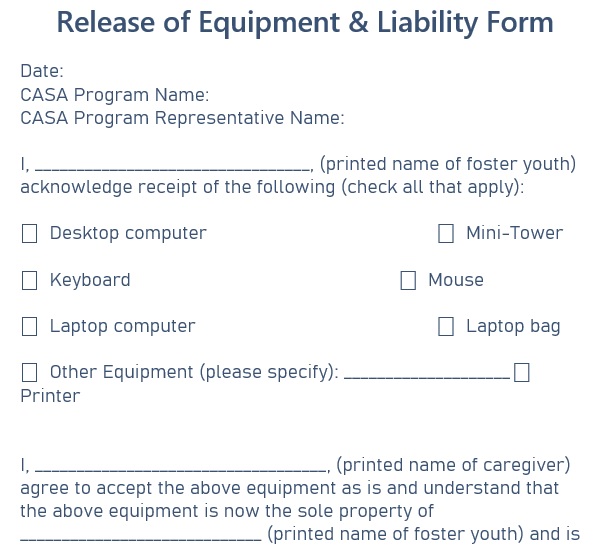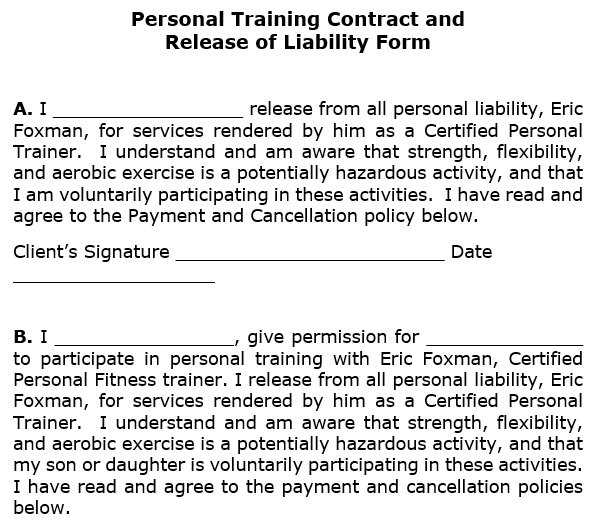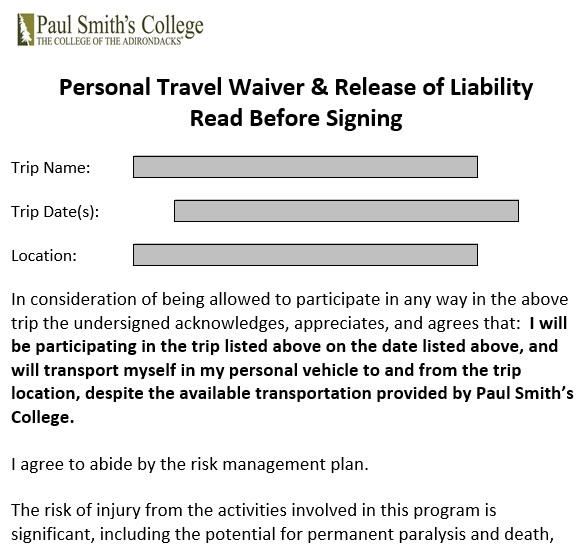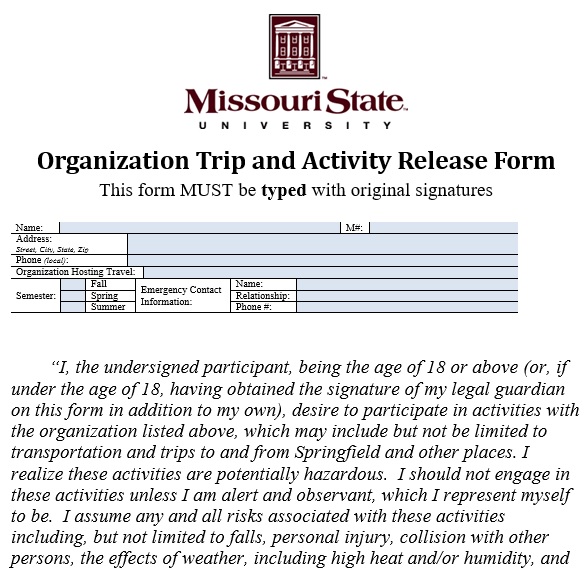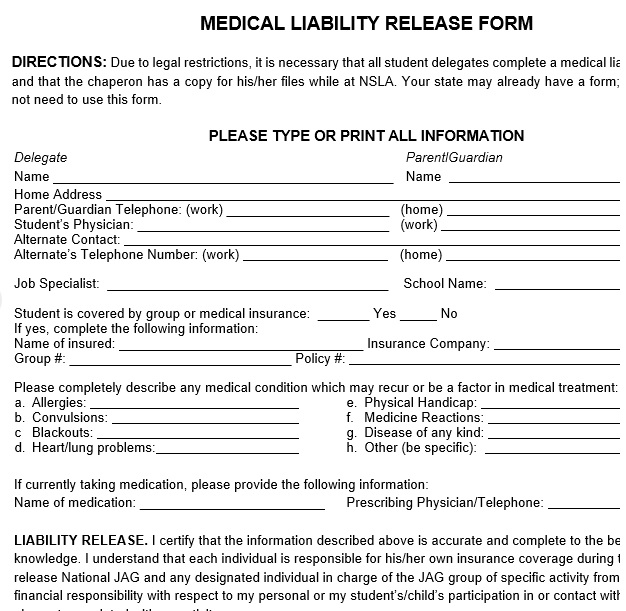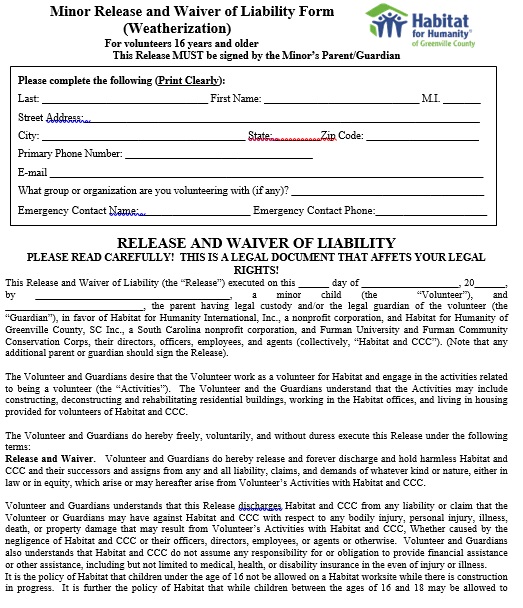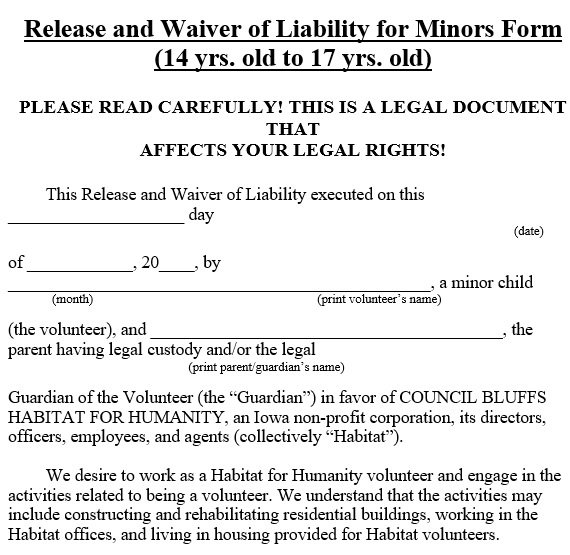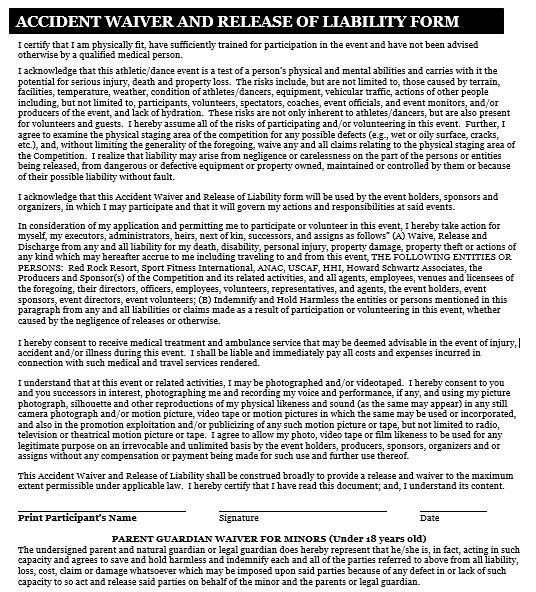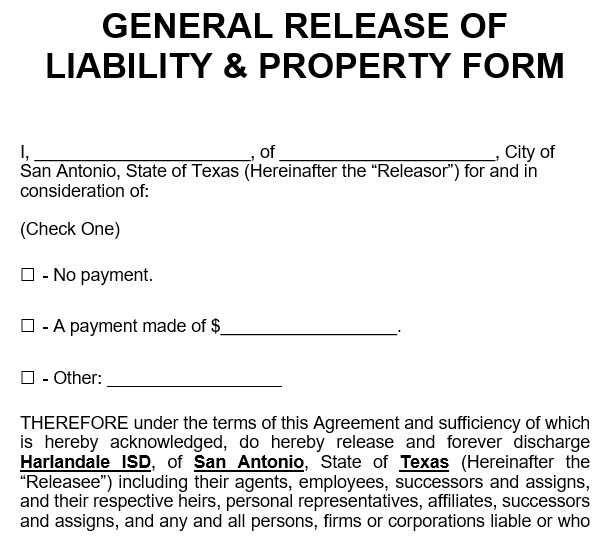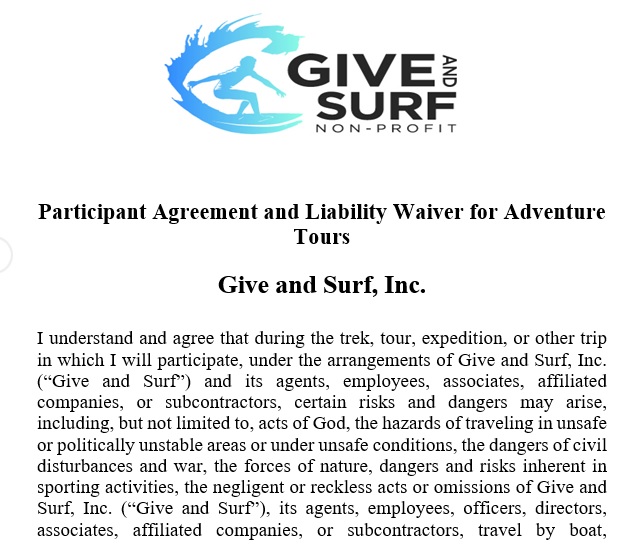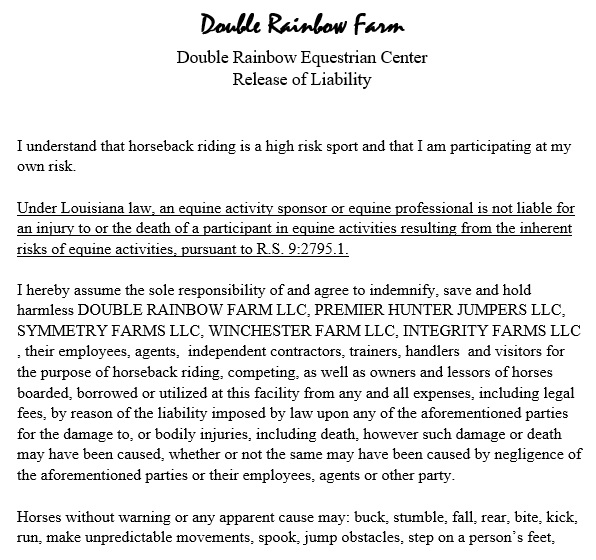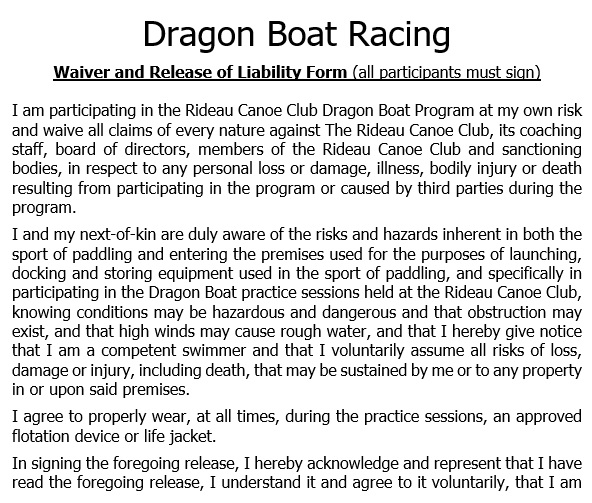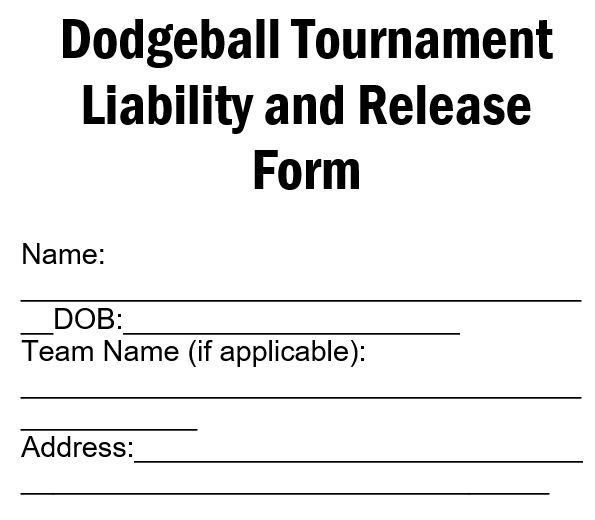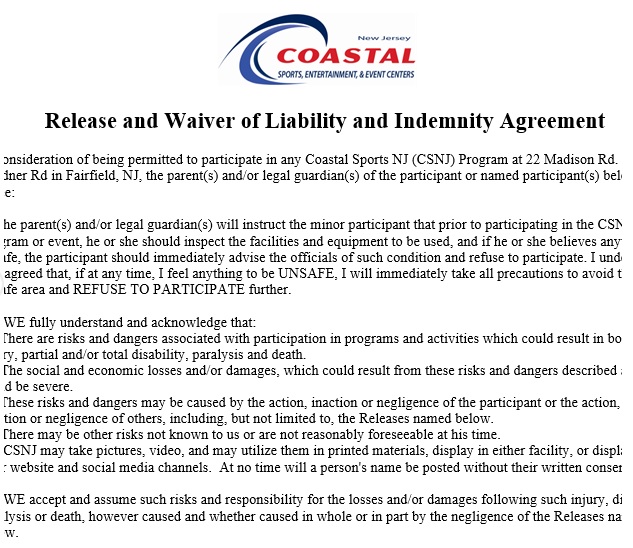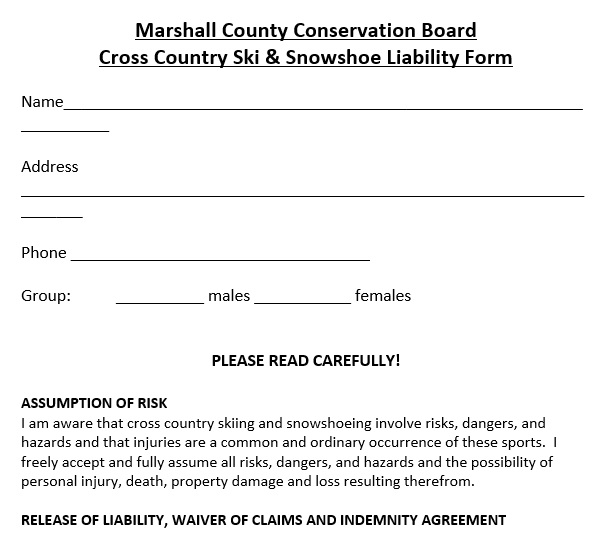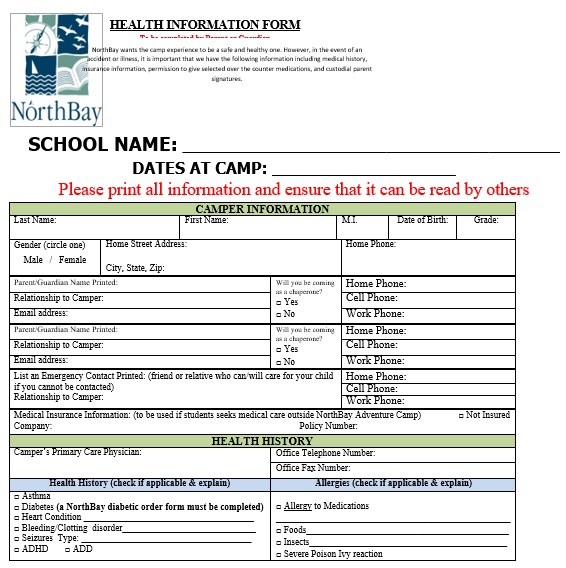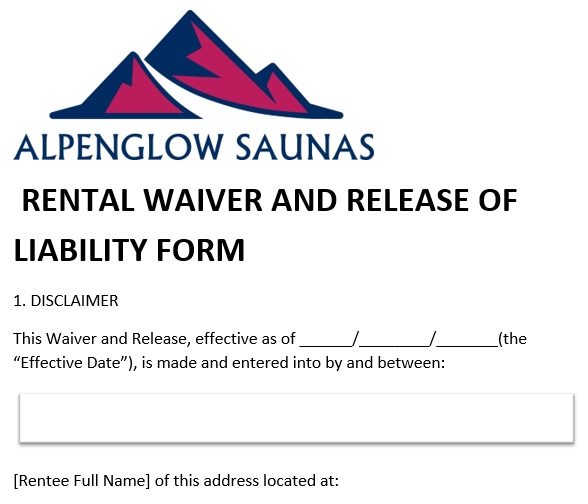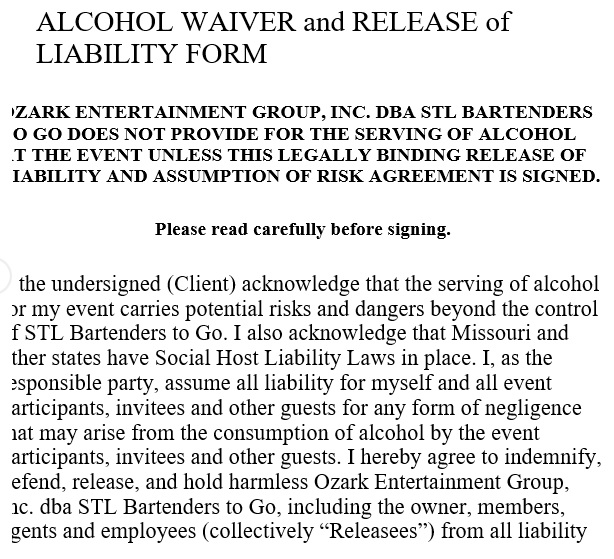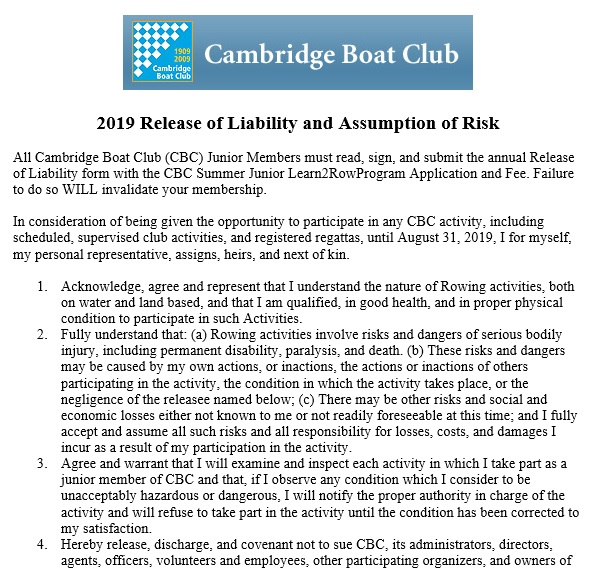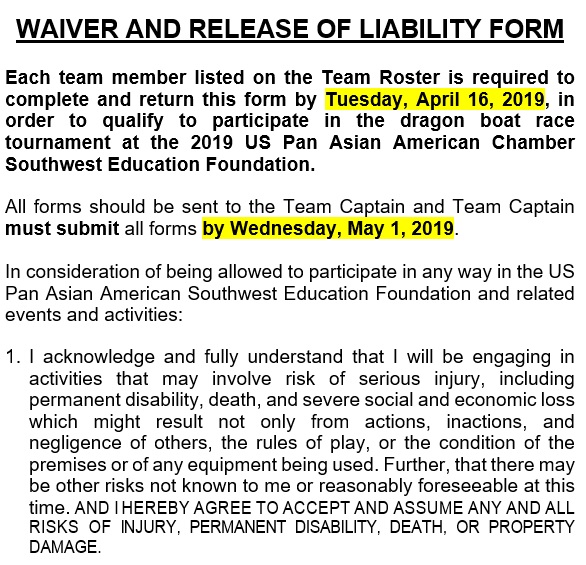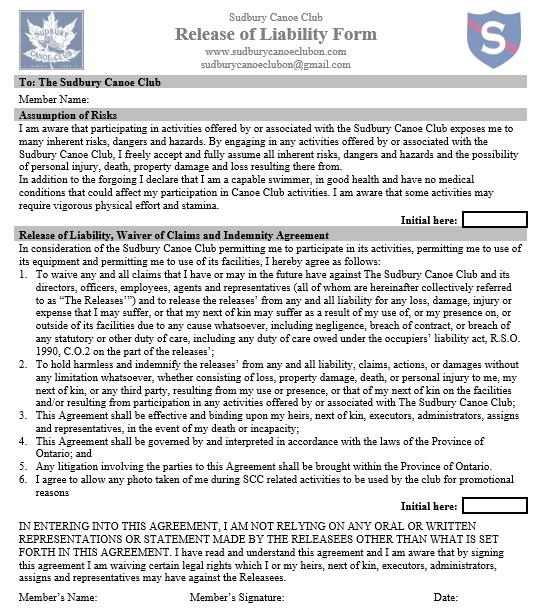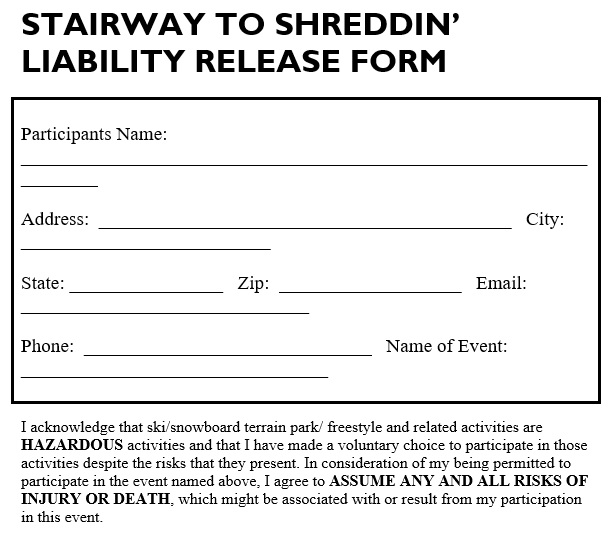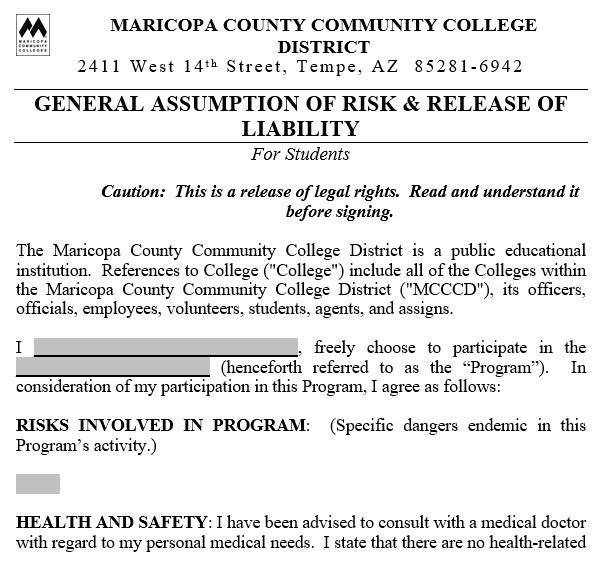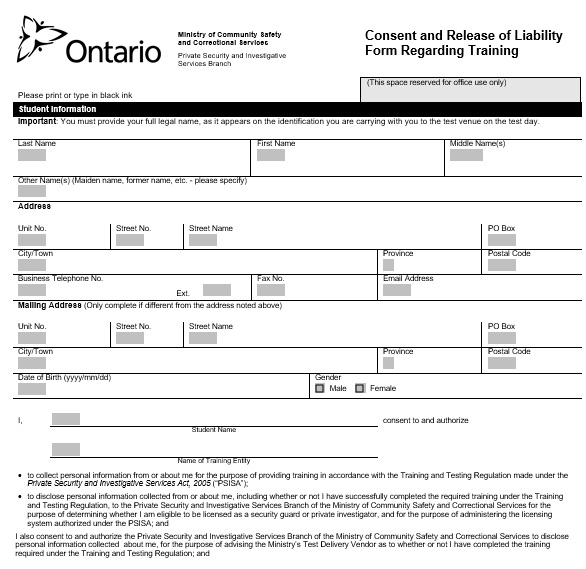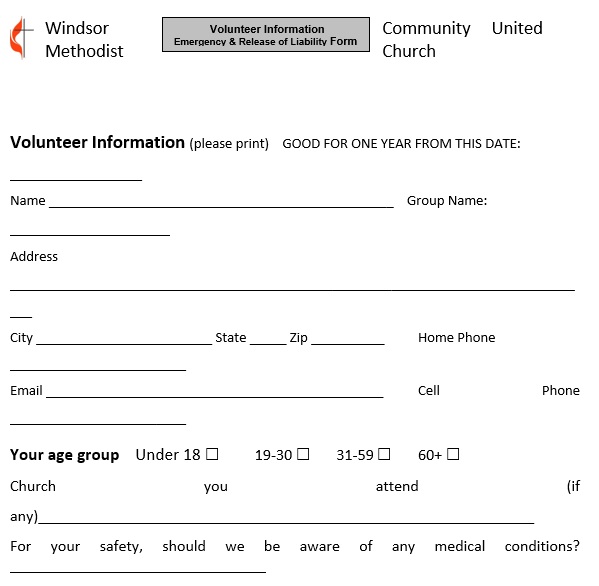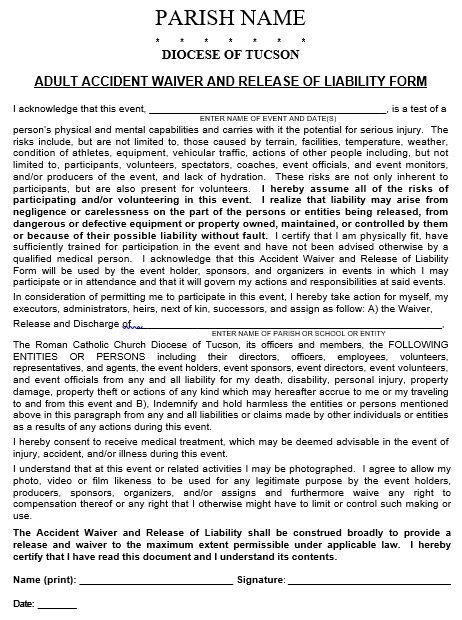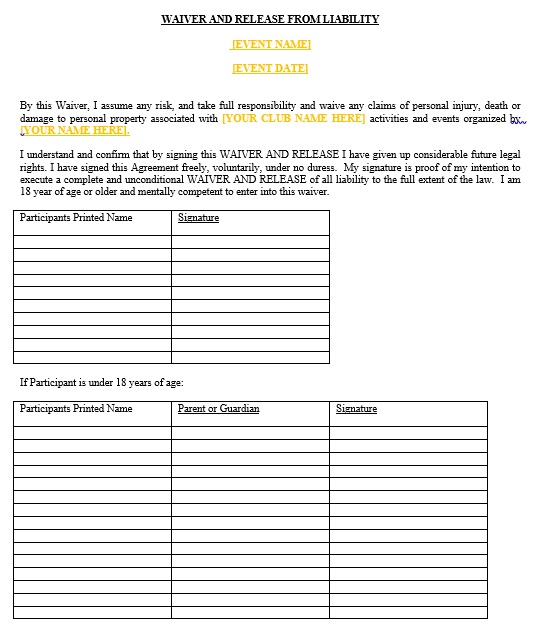The release of liability form is an essential document that protects the business from potential lawsuits. This document is used by businesses and entities due to its all-encompassing nature that covers a lot of risk at once. It is also known as the following;
- Release of liability agreement
- General release of liability form
- Hold Harmless Agreement
- Liability Waiver
- Waiver of Liability
Table of Contents
- 1 What is a release of liability agreement?
- 2 Different types of release of liability forms:
- 3 Basic clauses of release of liability agreement:
- 3.1 The waiver of right to sue clause:
- 3.2 The assumption of risk clause:
- 3.3 The hold harmless agreement clause:
- 3.4 The express indemnification for any losses incurred clause:
- 3.5 The medical consent responsibility clause:
- 3.6 The understanding and acknowledgement clause:
- 3.7 The severability clause:
- 3.8 The successor binding clause:
- 4 How to ensure that your wavier is fully enforceable?
- 5 Writing a release of liability:
- 6 When to use a release of liability?
- 7 Conclusion:
- 8 Faqs (Frequently Asked Questions)
What is a release of liability agreement?
A release of liability agreement is a contract between a business and a customer or two businesses/entities. It clears the business of any fault resulting from the use of its products, services, and spaces. It also clears the negligence of all or any of its employees, partners, and agents. In short, the agreement renders the business and its owners free of any crime, even if it results from the negligence of the business’s staff.
Different types of release of liability forms:
Let us discuss below the different types of release of liability forms;
General release
This type of release liability form is used when an individual is providing all known and unknown claims broadly against another party. The broad claims that are filed in the most common dispute cases, this document cover them.
Mutual release
A mutual release is opposite to general release. It is used when both parties provide all past and future claims against one another. They use this form to agree to walk away from the contract on their own terms rather than getting involved in a long and a pricey legal process.
Automobile accident release
This form is used by the parties in the case of car accidents to agree not to sue one another. They use it to avoid the hassle of going to court. The party that caused the accident gives a specific amount to the party that was injured or received damage to their vehicle.
Waiver for damage to property
The parties use this form to settle the dispute out of court when real property or personal property is harmed. You should use this document before you compensate someone for property damages that you caused. This way, the property owner can’t demand more money down the road.
Release for personal injury
In case of a personal injury, this waiver of liability can be used in which an injured individual agrees not to sue in return for a specific amount of money or value.
Basic clauses of release of liability agreement:
The basic clauses of release of liability agreement include;
The waiver of right to sue clause:
This clause states that the signatory has released the business from being liable for any incidents such as injuries, accidents, etc during taking part in any of the business activities. Moreover, it dictates that signatory has understood the potential hazards associated with taking part in the activity. It also asserts that the signatory has formally waived their right to sue the business.
The assumption of risk clause:
This clause extends the assumption that signatory is well-aware by all the potential hazards and risks of taking part in such an activity. It states that signatory was of sound mind. Therefore, he understood the nature of the activity he was taking part in. It also asserts that the signatory not hold the business not to blame for any resulting dangerous side effects.
The hold harmless agreement clause:
Likewise above clauses, this clause also asserts that business isn’t responsible in any way for any negative side effects. It also includes specific attorney’s fees or settlements that signatory promises to pay back in order the business shoulder them at any point.
The express indemnification for any losses incurred clause:
This clause asserts that the business cover any losses incurred as a result of the signatory’s potential hazards resulting from participation.
The medical consent responsibility clause:
Just like indemnification clause, the medical consent clause asserts that the signatory has consented to cover any medical costs resulting from any negative side effects arise from taking part in the business activity.
The understanding and acknowledgement clause:
Before the signatory signs, this clause asserts that signatory has read and understand the whole agreement and they have been of sound mind.
The severability clause:
Businesses or entities that have a lot to lose use this clause. It identifies that agreement is considered clause by clause. If any clause is found invalid then still the other clauses can be used for full legal effect.
The successor binding clause:
The successor binding clause protects the business’s partners, agents, and the future owners of the business from any litigation on the same case. You should also check Non-Compete Agreement Template.
How to ensure that your wavier is fully enforceable?
Your wavier should be enforceable so that it acknowledged in court. Here are some tips that make your wavier enforceable;
- Many businesses or entities want to cover their release of liability form under a bundle of other contracts so that they get more done in a less time. In this way, many people sign the form without reading its contents; this is trouble in the courts of law. That’s why you should create your own liability form that can be used as a single document.
- You can photocopy a friend’s liability waiver statement or getting a free liability waiver template from the internet but they may be designed for a general audience. So, you have to make sure it is directly attuned to your business. Additionally, you can also edit your friend’s liability wavier statement or a free liability waiver template from the internet.
- Not all liability waiver agreements are enforceable in every state. A number of American states wouldn’t recognize waivers at all. Others may recognize them in specific situations. However, others may have a constantly changing position on the acceptability of waivers. Some cities have particular requirements that you should be aware of for enforceable liability waivers.
- Your form may be struck down by a court of law and rendered useless. Thus, the only way to protect yourself and your business from being held liable is to expose and discuss all potential risks within the waiver.
- You should add a successor binding clause in your liability waiver and work around the spouse effect.
- Since the agreements are very sensitive documents so they need to be worded with care. In order to make your agreement more powerful, you should understand the power of terms like ‘negligence’. Legal must be used. Furthermore, ensure that the agreement features a section on definitions to make your agreement more enforceable.
- A few years ago, many states didn’t require that this form signed by the minors. Now, changes have made and you have to feature a clause in your agreement that covers minors’ involvement.
- Another way to make it more enforceable, it should be scanned and approved by your attorney before you adds it to your business’s contracts.
Writing a release of liability:
Here are the steps to write a release of liability;
Details of releasor and releasee
In this section, you have to provide the following details;
- The state’s name where the event in question will take place
- The date on which this contract will take effect
- The name of the releasor who is by promising not to sue or take legal action releases the owner or event organizer from liability.
- The name of the releasee who is at risk of being sued like an owner or organizer of an event.
Release of Claims
To sign the Release or Waiver, specify the amount of money, promised (in) action, or something of legal value given by the Releasee to the Releasor.
Governing state
The state is which this agreement will apply, mention it and make sure both parties will reside in this state.
Signatures
It is optional to name any witness to the execution of this Release and place his/her signature here.
Notary acknowledgement
This section will be completed by a notary with their signature. It is also optional.
When to use a release of liability?
- If you conducting an activity or event as the organizer, host, sponsor, or another party and want that the participants sign a Release of Liability in order to reduce your liability.
- If you conducting an activity or event as the organizer, host, sponsor, or another party and you want to get temporary authority to seek medical emergency treatment for your patrons and minors.
Conclusion:
In conclusion, a release of liability form is a formal document that protects the business of any fault resulting from use of its products, services, and spaces. It protects the business from potential lawsuits. Due to its all-encompassing nature, this form is highly popular among business and entities. You should use formal tone in your document as it is a sensitive document.
Faqs (Frequently Asked Questions)
For someone, it can take any amount of time to accept liability. Before someone accepts liability, there are various factors to consider and it will usually take as long as necessary.
You have to prove that the defendant did something wrong in case liability is not accepted and the prospective defendant states that they were not negligent.

